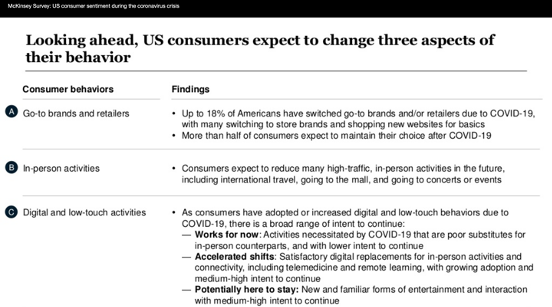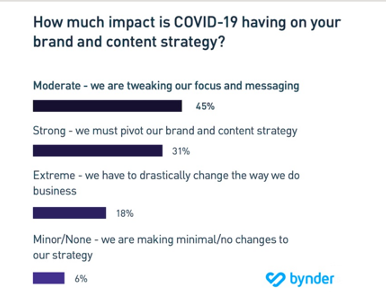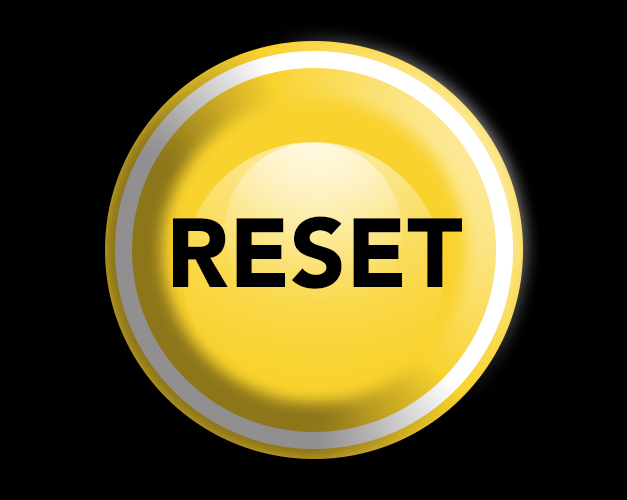Hitting the Brand Strategy Reset Button
Right now, no business can afford to pretend things haven’t radically changed.
During the last few months, consumers have been forced to find new ways to learn, work, entertain themselves, procure essentials and nonessentials, connect with others, and stay well. Companies of all kinds and sizes have had to pivot from “business as usual” to reinventing everything from what they sell to how they sell it and how they support their communities. And experts predict many of the current shifts in buying behaviors, communication preferences, service standards, and even brand loyalties are likely to become habits for the future.
Here’s a great example.

Source: “Survey: US consumer sentiment during the coronavirus crisis,” McKinsey & Company, June 11, 2020.
According to the McKinsey Survey: US Consumer Sentiment During the Coronavirus, there are at least three behavioral changes that are likely to stick around. Of the consumers who have switched to new brands or retailers during the pandemic, nearly two-thirds say they intend to stay with these new companies. Consumers also expect to continue limiting high-traffic, in-person activities such as travel and attending movies, concerts, and events. And they’re likely to continue using low-touch, digital replacements such as telemedicine, remote learning, streaming entertainment, and online fitness.
With these kinds of significant shifts, now is definitely not the time to bury your head in the sand. But that’s exactly what you’re doing if you aren’t already trying to figure out what your business will look like going forward and how you will successfully market and share the “new you” with all your stakeholders.
Recognize the impact
Bynder’s COVID 19 edition of the State of Branding Report revealed 94 percent of surveyed marketing experts feel the pandemic has already made a moderate to extreme impact on their brand and content strategy, causing them to either tweak, pivot, or drastically change their focus and messaging.

Source: “State of Branding Report,” Bynder, 2020.
These are compelling statistics! Some of you may immediately recognize where you fall on this chart, and that is good. Because if you are not at least making some attempt to keep your brand and content strategy relevant, you could be failing your business and missing opportunities.
So, I am sure you all want to start rethinking your brand communications NOW! But it’s not necessarily a quick fix. Short-term thinking is simply being reactive. We’re at the point where what’s needed is a more measured and proactive approach.
Return to square one
Like most things, it’s important to start from the beginning, which means starting with your business plan.
If you’re groaning that you did that already, you’re not alone. But businesses that really want to figure out not just where their business was and is today but also where they want it to be in the new future will be willing to do the work required to make their business plan a “living” document.
Refreshing your business plan provides you with the opportunity to realistically reevaluate your position based not on history or intentions but emerging conditions. So do a thorough SWOT analysis outlining not only your strengths and weaknesses but also your opportunities and threats in the evolving environment. Identify your ideal customer(s). Is that customer different now? Develop a customer persona (or personas). Really get acquainted, so you can reframe how you communicate and how you create messaging that will continue to resonate.
It’s all about staying strategic, introspective, and critical. Think outside of the box, go where it is comfortable and uncomfortable, find your sweet spot. This revitalized business plan can help you clarify your goals, identify potential roadblocks, decide what you’ll need in the way of resources, figure out where to focus your time and energy, and assess the viability of your growth plans before you start.
Reevaluate your relevance
A fresh—or refreshed—start also puts you in a much better position to evaluate whether or not your brand identity strategy is still relevant. (And, if you do not have a brand strategy, will provide the perfect opportunity to put pen to paper and develop one!)
The importance of a powerful branding strategy is it can help build your reputation, establish your authority, make you stand out from your competition, and clearly represent the values that will attract your ideal client. These are all important factors, especially now.
Reinforce what matters
When we talk about branding strategy, many of you may be thinking of visual brand identity—what people picture in their minds when they consider your brand. It’s the Nike swoosh, the John Deere leaping deer, the F for Facebook, the golden arches for McDonald’s. But your brand is much more than a logo or symbol or tagline. It’s the thoughtful representation of your company consistently applied across all your communications and marketing materials.
So, a powerful brand identity strategy is, of necessity, also underpinned by several other key elements in addition to your visual identity:
- Your mission statement, which summarizes your goals and values as a company
- Your vision statement, defined by where you aspire to be upon achieving your mission
- Your core values—the traits your business considers the highest priorities
Finally, in developing a strong brand identity, you’ll also want to audit how your brand is being used right now and understand how your competition is representing themselves in the marketplace. Research aspirational brands that get it right. Then identify what is most important to your business and make sure that comes through loud and clear.
Reemerge stronger
With the world facing such a wide range of new realities, there’s never been a better time to hit the reset button on your branding strategy. It might also be the perfect time for you to be a bit braver, break out of your comfort zone, and better position your business to thrive. Remember, there is no status quo going forward. So, start fresh from a position of strength. Do the work. It will be worth it.
Lexie Markarian is Street Level Studio’s director of new business development
